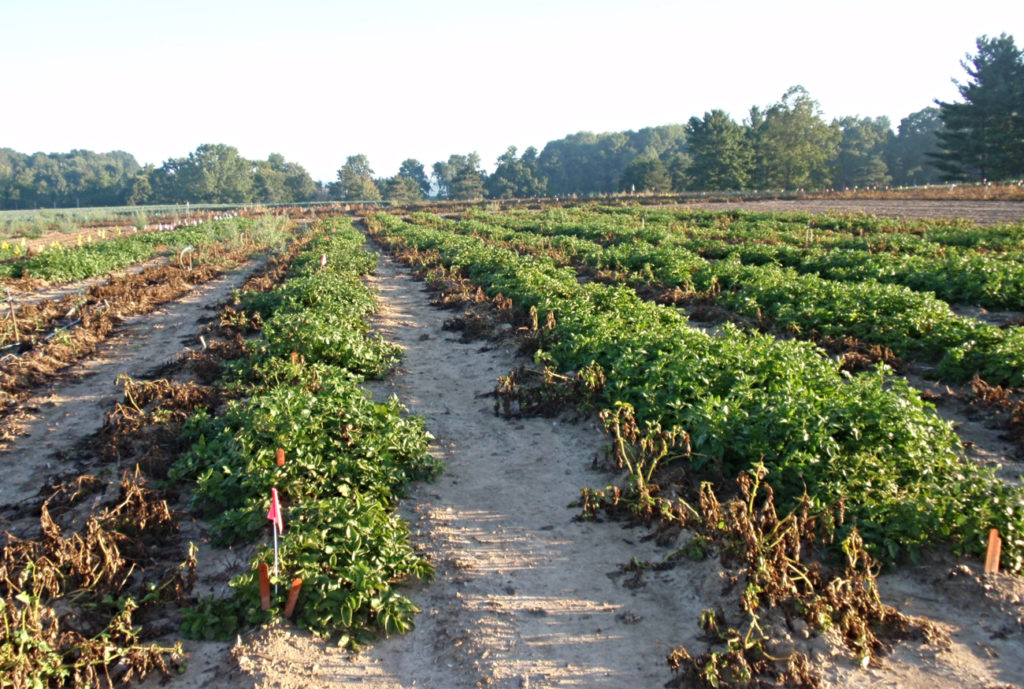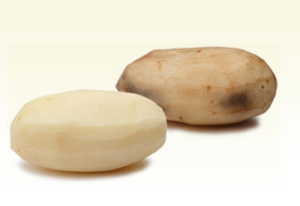
Biotech potatoes can bring improved performance, quality to global markets
From a scientific perspective, the potato is a pretty cool crop to work with. Cultivated potato and its wild relatives contain a lot of diversity — both above and below the ground. When growing potato collections in the greenhouse we get to see different leaf shapes, flower and tuber colors, and a variety of other features.
Genetically, however, potatoes can be a bit problematic to work with, and the process of developing new varieties with characteristics growers desire can be inefficient. There are methods to help simplify and streamline the breeding process. In the March Spudman issue, you may have read about efforts to develop potatoes into a diploid crop. New genetic tools can help streamline the process, too. Biotechnology also can help speed the introduction of new traits into already popular varieties.
Wild potato species offer a rich source of traits that can be used to improve varieties. They have adapted to grow in diverse soils and climates like high mountains, low valleys, dry deserts and wet rain forests in Central and South America, and exist in these harsh environments without the need for added pesticides, fertilizer or irrigation.
Although many wild species can make tubers, the yield is poor, and they may not be desirable for food. So, in our research we use them mainly as a source of important traits, like natural resistance to diseases. The downside is it takes a long time (10-15 years) to develop new varieties using traditional breeding with wild species. Biotechnology (i.e., genetic modification) can help us in this process by moving specific traits, or genes, into varieties that we already grow.
To help demonstrate the power of biotechnology, consider the following analogy: Imagine you have two decks of cards, one red and one blue, and each deck contains all the genes of a potato. The red deck makes a great potato, but lacks resistance to late blight disease. The blue deck has late blight resistance (the ace of spades), but these potatoes are unmarketable. To get the blue ace of spades (LB resistance) together with the rest of the red deck (good potatoes), you could shuffle the two together and divide the deck in two (essentially what happens when potato breeders make a cross).
Each deck makes a potato, but only one of the decks has the blue ace of spades and it brought with it a lot of other blue (not so good) cards. You can keep shuffling this new deck with more red cards, but imagine how many times you would have to shuffle the cards to get a perfect deck — all red cards and only the blue ace of spades.
Compare this with simply picking out the blue ace of spades and placing it into the red deck. Wouldn’t that be easier? And the results would be the same.
This is essentially the difference between using traditional breeding (shuffling) and biotechnology (stacking the deck). We can find our blue ace of spades in wild relatives of potato and introduce it into our favorite potato varieties (the deck of red cards) relatively easily. That sounds simple, but extensive testing is still needed to make sure the potato is safe to eat and grows as expected.
The history of biotech potatoes
Biotech potatoes are not a new commodity in the U.S. In the mid- to late-1990s, NatureMark, a wholly owned subsidiary of Monsanto, marketed NewLeaf and NewLeaf Plus varieties with Colorado potato beetle and beetle plus leaf roll virus resistance, respectively. However, anti-biotechnology activism led to reduced interest among consumers, and the resulting reduction in marketability caused NatureMark to cease operations in 2001. Since then, the J.R. Simplot company has led the charge in developing and marketing biotech potatoes in the U.S.

Simplot’s first biotech potatoes are branded Innate because the varieties have traits obtained by adjusting the expression of only potato genes.
Two generations of Innate have been developed so far. The first generation, which entered the market in 2015, has black spot bruise resistance and a lower potential for producing acrylamide in cooked products.
Generation 2 Innate varieties have added cold-induced sweetening resistance to improve storage capability in varieties like Atlantic for chips and Ranger Russet for fries, so they can be processed from cold storage up to 8-9 months after harvest. This ensures that fewer potatoes are wasted due to unacceptably dark colored fries or chips. Another trait added to Innate Gen 2 potatoes was foliar late blight resistance from a wild species of potato called Solanum venturii. Because the gene from the wild potato species provides resistance to late blight but not other diseases, fungicide applications are still recommended during the growing season, but those applications can be reduced by half.
The third generation of Simplot potatoes (estimated availability in 2025) will have two more genes added for late blight resistance, bringing the total to three. Having three genes for late blight resistance is equivalent to having three modes of action against the pathogen. The late blight resistance is both stronger and longer lasting. Testing by Simplot with over 40 strains of late blight from around the world proved that the three gene stack in potatoes provides comprehensive and expansive resistance to late blight.
Generation 3 potatoes also will have potato virus Y resistance that will make the production of certified potato seed easier for seed growers.
Slow acceptance
Despite the advantage that biotechnology brings to food production in the U.S., market acceptance of bioengineered products is changing only slowly.
Domestic and international regulations currently discourage the production of biotech foods, which further hinder progress in this area. For this reason, other means to deliver compelling traits are being pursued.
Genome editing tools can deliver traits to potato in a manner like genetic modification, with fewer regulatory requirements in the U.S. and other nations. You can expect to find potato varieties improved by the action of gene editing tools to enter the marketplace in the near future.
Biotech potato around the globe
In developing countries, access to elite varieties and effective pesticides that are needed to control disease can be limited. Farmers in these countries are eager to grow potato varieties requiring fewer inputs, and resistance to late blight is of primary importance.
Currently, two projects are working internationally to commercialize late blight resistant potatoes with three resistance genes from wild potato species. The Feed the Future Biotechnology Potato Partnership (BPP) led by Michigan State University is focused in Bangladesh, and Indonesia and the International Potato Center (CIP) is doing research with the Victoria variety in Uganda and Kenya.
CIP’s confined field trials (CFT) have seen the bioengineered potatoes successfully cultivated without fungicides, while non-bioengineered potatoes were rapidly killed by late blight disease. The yields from the bioengineered potatoes were four times higher than the national average.
The Biotechnology Potato Partnership, in conjunction with private sector partner Simplot Plant Sciences, is testing three-gene late blight resistant potatoes in the Diamant and Granola varieties to support smallholder farmers in Bangladesh and Indonesia. After much testing and research in the U.S., Indonesia has begun CFT testing. The Diamant lines, pending regulatory approval, will begin greenhouse trials this summer in Bangladesh.
Both projects have navigated the often difficult and ever-changing regulatory landscapes in developing countries and hope to see their late blight resistant potatoes in farmer fields within 3-5 years.
Conclusion
Together with new breeding technologies including genome editing and genomics-assisted breeding, genetic modification remains a useful tool in the genetic improvement of potatoes. The 100-plus wild species relatives of potato provide a virtually endless source of traits that can be incorporated into elite varieties relatively easily and quickly. The biotech potatoes currently on the market and those being developed provide traits that benefit growers, processors, retailers and consumers and provide traits that lead to sustainable benefits for the land. Work continues to promote the technology with early adopters who see the benefits of the traits.
— Dennis Halterman is a research geneticist for the USDA’s Agricultural Research Service. Craig Richael is director of research and development for Simplot Plant Sciences. David Douches is a professor in the Department of Crop and Soil Sciences at Michigan State University. They wrote this article on behalf of the Potato Association of America.














